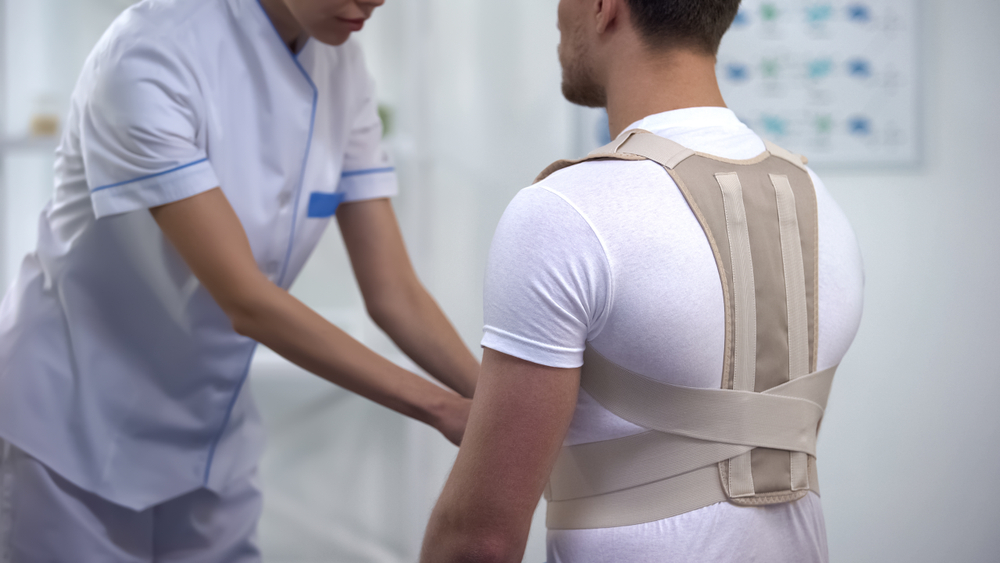The 50% In-Brace Correction Myth
Some of my readers may have heard of 50% in-brace correction. Maybe you have heard of it but don’t understand what it means. For those still learning, let me start from the beginning and explain what you need to know about the 50% in-brace correction myth, scoliosis brace correction, and the goals of in-brace correction.
What Is Scoliosis and Why is it a 3-Dimensional Condition?
Scoliosis is a 3-dimensional condition of the spine. The body is affected in all three planes: coronal, sagittal, and transverse. The coronal plane is what we see when we look at the body from the front or back. The sagittal plane is what we see when we look at the body from either side. The transverse plane is when we look at the body from the top or bottom.
Scoliosis is present when there is a rotation of the vertebral bodies and sagittal/coronal curvature of the spine. Scoliosis brace therapy aims to correctly treat scoliosis by considering all three planes and the whole body to change the spine’s 3-dimensional condition.

What are the Goals of Scoliosis Bracing?
Scoliosis bracing has one ultimate objective: reducing condition progression and improving a patient’s quality of life.
On a technical level, the goals of scoliosis bracing sound a little more functional.
- Derotate the vertebral bodies
- Elongate the spine
- Stabilize the spine
How Scoliosis Goals Are Measured
Doctors can measure progress towards goals of scoliosis bracing in several ways: objectively, with a device called a Scoliometer, with changes in body height, or by assessing the amount of decompensation to a vertical change over time.
My patients often ask me what their physicians mean when they say, “The brace is getting 50% correction.”
This refers to the unwritten “50% in-brace correction” standard established during the first developments in scoliosis bracing history. It implies that a brace should achieve fifty percent correction immediately after donning to be considered an effective solution for scoliosis.
For example, if the angle of a person’s thoracic curve is measured to be 36 degrees, the expectation of the brace’s correction would be 18 degrees in-brace.
It is critical to assess interventions and their outcomes for effectiveness. In 2013, Knott published a research study that analyzed in-brace correction retrospectively (1). The research aimed to help develop a standard of expectation to qualify the effectiveness of scoliosis bracing.
However, it is just as important to recognize that the human body is complex. Placing a numerical value on an intervention to represent the mass of individuals within the adolescent group may be helpful or detrimental to different patients.
How Are Scoliosis Goals Helpful?
It is helpful to reach an expected objective outcome so that the orthotist, physical therapist, and physician have confidence that the intervention is accomplishing the intended goals of scoliosis bracing.
It gives patients and parents peace of mind that they are doing everything they can to help improve the condition.
How Can Scoliosis Bracing Goals Be Detrimental?
If a person’s curve is rigid, there is only a certain amount of change that scoliosis brace correction can achieve. The primary goal then becomes to prevent progression – not necessarily to obtain 50% correction. If the contact points are increased, becoming a force on the body with the goal of more correction to a curve that cannot be reduced, and the body cannot move away from this force, Wolff’s Law comes into effect.
Wolff’s Law states that your bones will adapt based on the stress or demands placed on them. Bones will bend or flatten under force. As a result, the patient’s rib cage can become flattened, and skin may break down or bruise. The deformity is permanent and visible.
Unfortunately, I see this often. As you might guess, it occurs in the most compliant scoliosis bracing patients – those who wear their brace all day and through the night, doing their best to help avoid potential surgery and improve their self-image.

Often, these patients come in for a consultation because their current brace is not achieving the correction they hoped for. After evaluating and finding that the curve is rigid, I explain that further scoliosis bracing will not be able to correct a rigid spine and that our goal should not be 50% correction. I help them set realistic expectations, such as improving the body’s balance, working on “perfect” posture, preventing progression, and avoiding surgery.
In addition, if one curve gets overcorrected without controlling the rest of the spine, scoliosis moves either up or down, creating a new curve that may be much more difficult to treat — or worse, goes unidentified.
Finally, if there is an overcorrection of the curve, the vertebrae can over-rotate and cause imbalances and compensatory movements, creating a new problem.
Patients with a flexible spine could see 50% in-brace correction or much more – this is because we can more easily unwind and elongate the spine. Of course, this depends on flexibility, compliance with scoliosis bracing, and the person’s bone maturity.
My Final Conclusion on 50% In-Brace Correction
We have found that depending on the flexibility of a person’s spine, bone maturity, and compliance with the brace, correction will vary from person to person. If a person’s body is forced to move in a direction that is unavailable, it will find ways to compensate. So it becomes imperative that Orthotists evaluating patients for scoliosis are well-educated and experienced.
The human body changes tremendously during adolescence, but the brace does not. Custom scoliosis braces can only accommodate a certain amount of growth/change. Rigo-Chêneau braces can accommodate 2-3 inches of growth and approximately 15 lbs of weight change. Most thermoplastic scoliosis braces have a similar range. Follow-up appointments every three months will allow the Orthotist to evaluate how the body has changed within the brace and ensure it fits appropriately.
I find it upsetting to think that patients could be left with a permanent disability or worsened adult scoliosis due to a lack of knowledge or following the “standard” of yesterday. As clinicians, we have learned so much about bracing for scoliosis and continue to learn more over time.
The most important thing we can do is continue learning, think outside the box, and measure our outcomes. Devoting time to researching is crucial to developing better orthoses for our patients that provide them with the best possible outcome.
After reading this article, please feel free to reach out with any questions or comments. I truly enjoy hearing from readers. I can be reached at julie@scoliosistherapycenters.com.
Julie McCulley


